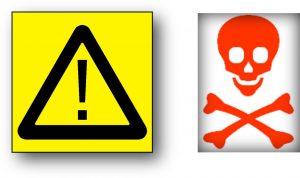SHEQ Policy
As a Gold Producer, EGM (MPC) Mines are committed to continual improvement through the implementation and maintenance of integrated Safety, Health, Environmental and Quality Systems.
To achieve excellence in sustainable development and promote a SHEQ Culture, it is our policy to:
- Prevent ill health and injury to persons working for and on behalf of EGM (MPC) Mines and the community that surround us.
- Protect the surrounding environment in which we work from any impact that may arise from our operations, and applying the principle of sustainable development.
- Continually improve our Safety, Health, Environment and Quality performance systems.
- Mine a product that consistently meets the requirements of our customers.
OUR COMMITMENT WILL BE ACHIEVED BY:
- Ensuring that this policy is communicated and understood by all persons working for and on behalf of EGM (MPC) Mines.
- Complying with all applicable legislative and other requirements including organisational requirements and standards.
- Developing a SHEQ Culture by improving our employees and contractors’ SHEQ Awareness and skills by holding them accountable for SHEQ Performance in their areas of responsibility through competency training and assessments.
- Ensuring that all SHEQ Risks and Impacts associated with exploring, extracting and producing of our product are identified, evaluated and controlled according to a well maintained SHEQ Management Plan. Also considering the risks on our operation and environment as a result of community activities bordering our operations. Promote employee communication and participation in the prevention of injuries and ill health.
- Setting objectives and targets for continual improvement of SHEQ and production performance, and regularly reviewing the set objectives and targets.
- Monitoring and measuring the effectiveness of the SHEQ performance by conducting regular audits, inspections and management reviews.
- Conserve natural resources and focus on the prevention of pollution by reducing the environmental burden of waste generation and emissions to the air, water and land through strategies focused on the reduction, re-use and recycling and appropriate deposition of waste.
- Planning, operation and closing of operations in a manner that promotes sustainable development.
- Engaging and communicating with stakeholders, with due regard and respect for local interests, cultures and customs, and contribute meaningfully to the economic, social and educational well being of the communities in which we operate.
- Review this policy annually for continued suitability.
Risk Management Definitions
The terms used to describe events, which could or do result in unintended harm are INCIDENT, ACCIDENT and NEAR MISS.
A practical definition of each term is as follows:
- INCIDENT : an Inadequately Controlled or Unplanned Event, which could or does result in harm, not only to people, but also to processes, company property and the environment.
– There are two types of incidents: Accident Type Incidents and Near Miss Type Incidents.
- ACCIDENT TYPE INCIDENT: This type of Incident is an unplanned event which results in harm, damage or loss.
– Incidents do not only relate to injuries. Injuries are only one consequence of an Incident.
- NEAR MISS TYPE INCIDENT : This type of Incident is an unplanned event that could have resulted in harm, damage or loss.
– Near misses must be used to learn from and therefore must be investigated thoroughly.
Reporting of Near Misses
What is the Purpose of reporting a Near Miss?
- To Pro-Actively prevent minor occurrences from escalating into more severe incidents by implementing preventative actions established from previous Near Miss Incidents.
- By sharing the information from the Investigations into Near Miss Incidents we empower Teams with knowledge on how to avoid a re-occurrence of the Incident.
- Significantly reducing the frequency and severity of more severe incidents.
Reporting of Incidents
Why do we Report and Investigate Incidents?
- Incidents are investigated to put preventative measures in place and determine key learnings
- The root causes of Incidents are identified and lessons shared with other Related Sites
- So doing, we ensure repeat Incidents are prevented and costs related to incidents are reduced
- Incident investigations determine whether you need to revise:
– COPs / Procedures / Standards / Systems
– Conduct new Risk Assessments or implement new Systems
Safety Behavioural Observations (SBOs)
Why do we need to observe the safe behaviour of our employees?
- It demonstrates your commitment to Safety and Visible Felt Leadership.
- It focuses everyone’s attention on Safety and creates good Safety Habits.
- It shows how well Safety Rules are understood and applied in the workplace.
- It indicates where Systems are working well and if they are practical to use.
- It helps identify weaknesses in Systems, Processes and Procedures.
- It helps clarify Safety Standards and ensures employees understand how to apply them.
- It raises awareness of Safety Issues, at risk behaviours and dangerous situations.
- It identifies areas or specific tasks where people take risks and short cuts.
- It prevents Incidents that can result in Property Damage, Injuries or even Fatalities.
- It is used in conjunction with Sect 23 of the MHSA





